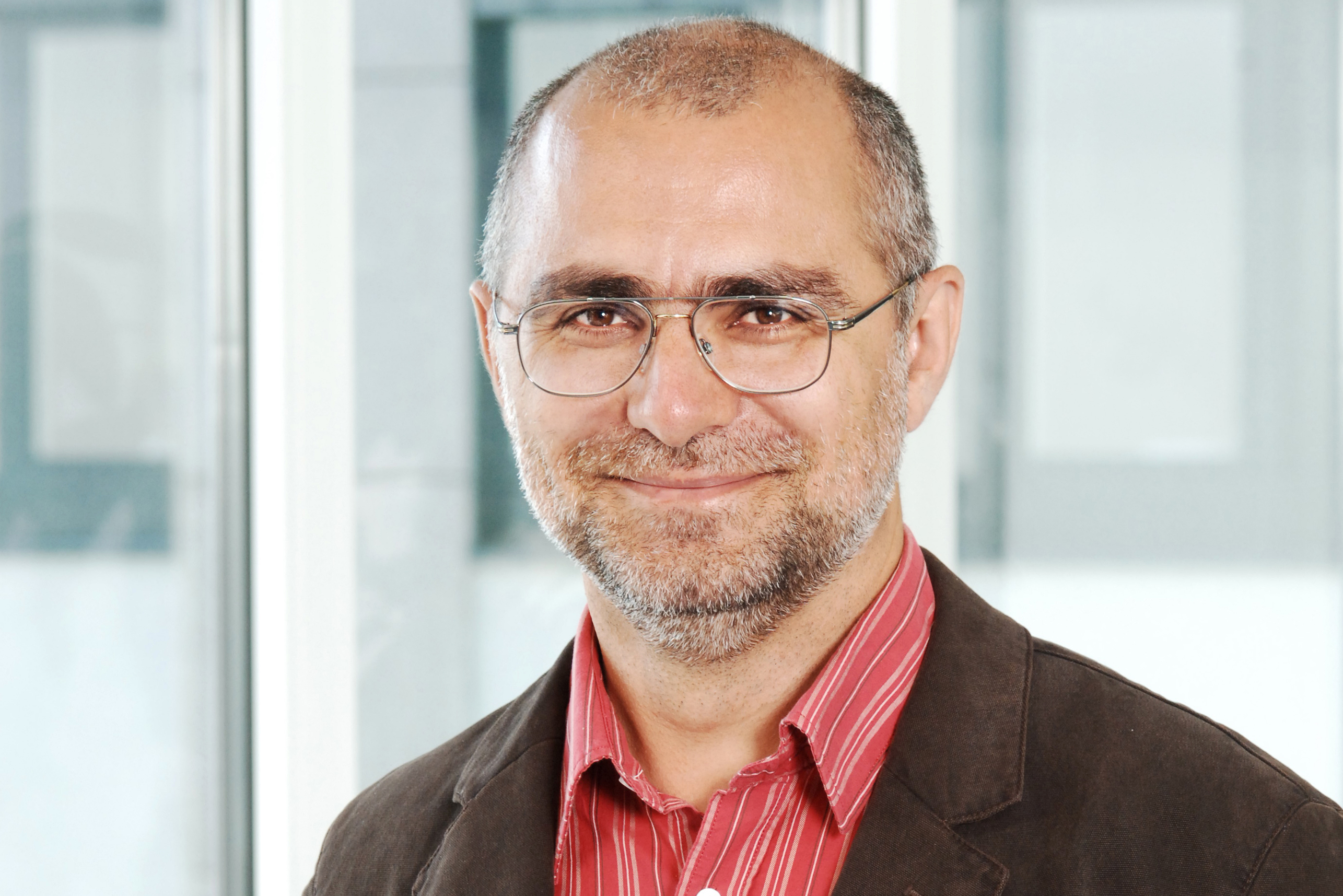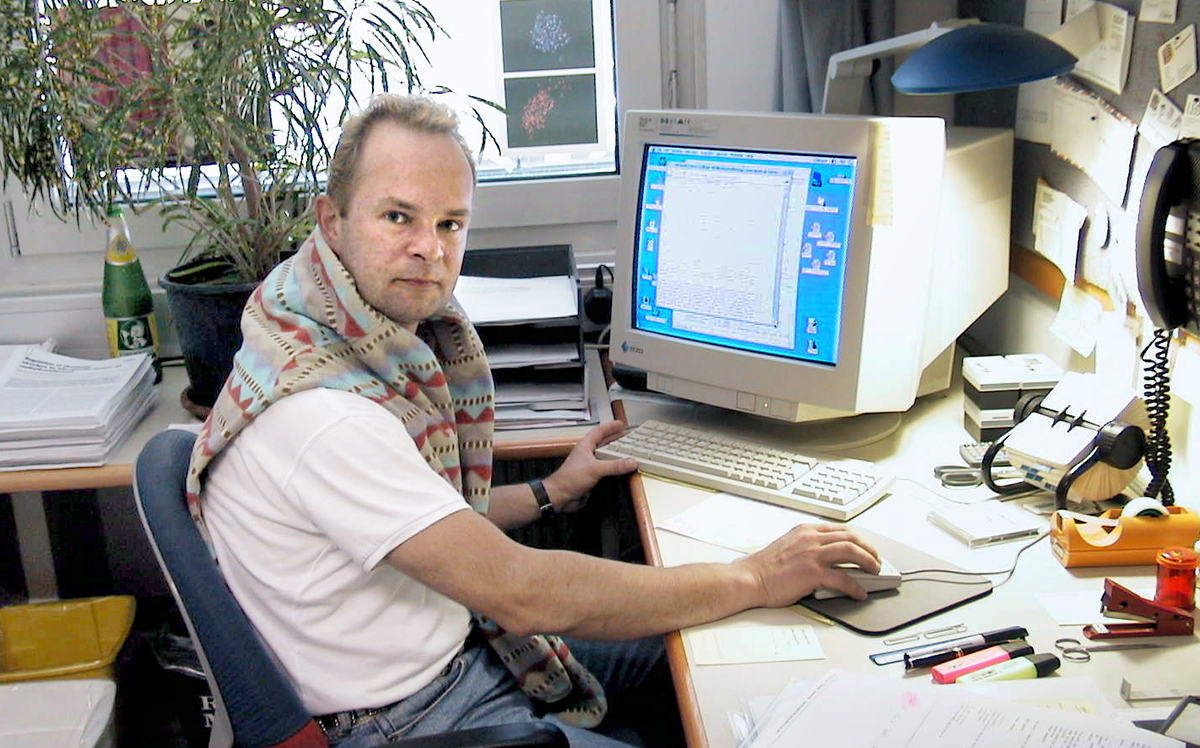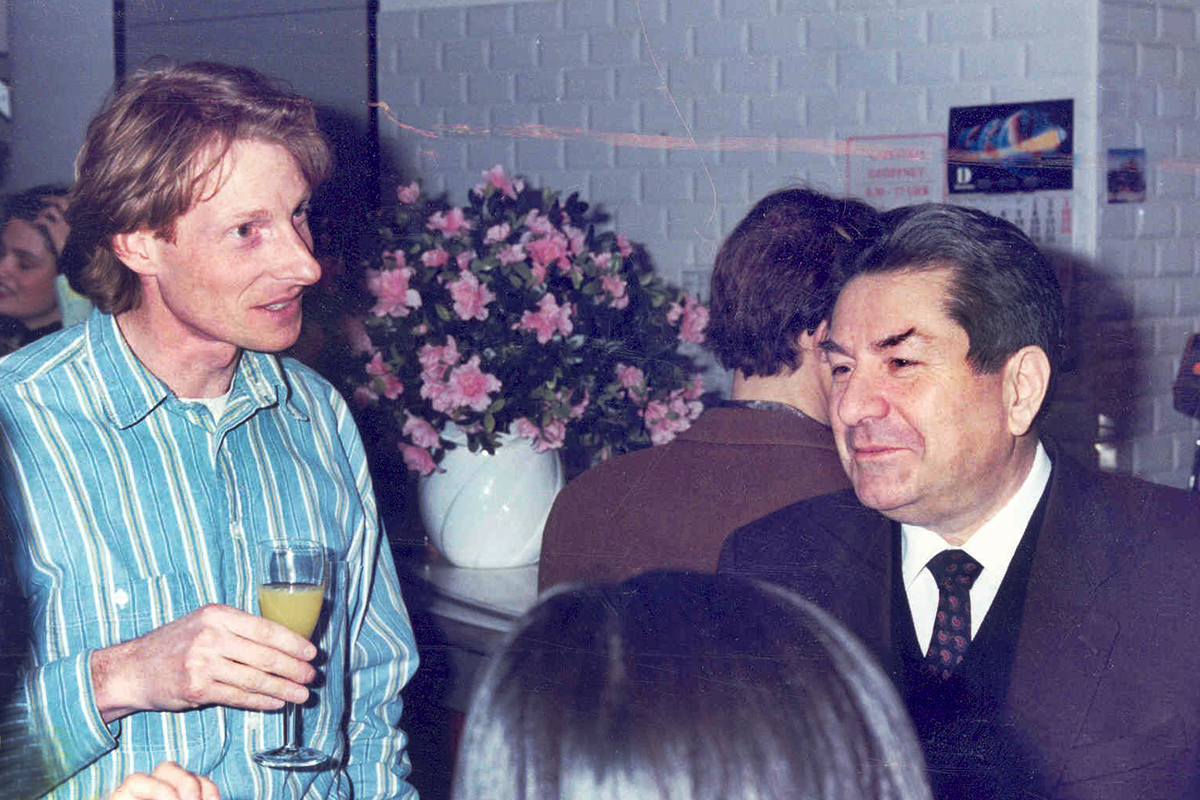Histone lysine methylation and a new era in epigenetics
Landmark work around the turn of the millennium catapulted the field of epigenetics, the study of phenotypic changes that do not involve alterations in the DNA sequence, into the scientific limelight. In particular, breakthroughs in understanding of histone modifications and their impact on the structure and function of chromatin, which organises DNA into compact structures in the nucleus, triggered a deluge of publications with far-reaching implications. During 15 years as a group leader at the IMP in Vienna, Austria, Thomas Jenuwein’s work, particularly that on mammalian histone lysine methylation, was instrumental in triggering and ensuring the successful continuation of this remarkable era.

Thomas Jenuwein (or ‘TJ’ as he is widely known) joined the IMP as a junior group leader in October 1993 following a productive postdoc with Rudolf Grosschedl at the University of California San Francisco. There, he had worked on the immunoglobulin heavy chain enhancer, focusing on how chromatin becomes accessible to allow enhancer function. For his independent work, Thomas wanted to learn more about how higher order chromatin organisation regulates gene activity and genome function. Although there was much interest at the time in ‘euchromatic’ (transcriptionally active) and ‘heterochromatic’ (transcriptionally repressed) domains, the underlying structural components for the establishment and maintenance of these higher order chromatin structures were poorly understood, particularly in mammals. Genetic screens on position effect variegation (PEV) in Drosophila had implicated many genes – called suppressor of variegation, or Su(var), genes – in the organisation of repressive chromatin domains. Therefore, Thomas reasoned that searching mammalian genomes for similar genes was a good place to start.
Gunter Reuter from the University of Halle-Wittenburg in Germany very generously sent Thomas a clone of Drosophila Su(var)3-9, whose mutation had one of the strongest PEV effects, even before publishing the work. This enabled Götz Laible from Thomas’s team to isolate human (SUV39H1) and mouse (Suv39h1) homologues (Aagaard et al., EMBO J 1999), with the characteristic ‘chromo’ and ‘SET’ domains. ‘Chromo’ domains were known to direct association with chromatin, and indeed SUV39H1 localised to heterochromatin. However, this did not reveal much about the protein’s function, and the role of the ‘SET’ domain was completely unknown. Thomas suspected that it had some kind of enzymatic activity, perhaps phosphatase activity, since its overexpression in cells reduced accumulation of phosphorylated histone H3 (Melcher et al., Mol Cell Biol 2000). However, bioinformatics searches had not revealed any similarity to known enzymes.

It was around this time that the bioinformatician Frank Eisenhaber joined the IMP with the task of forming the first bioinformatics group at the institute. “I was probably one of the few people in the world who had an idea of how to read signatures in protein sequences”, says Frank, now Executive Director of the A*STAR Bioinformatics Institute in Singapore. Even before coming to Vienna, Frank detected, using sensitive bioinformatic algorithms, similarities of the SET domain to plant methyltransferases. “It immediately clicked”, recalls Thomas. “It was clear that we should test whether the recombinant human SUV39H1 protein can methylate histone H3”. The day after receiving this important piece of information from Frank, Thomas had to leave for a meeting in the U.S. but left a handwritten note for his PhD student Stephen Rea, who was on vacation, with a request to do the in vitro methyltransferase assay. Sure enough, on his return, the result was waiting, and the experiment had worked. “I knew immediately that this would change my entire scientific career”, recalls Thomas.
He then teamed up with David Allis, at that time at the University of Virginia, USA, to further elucidate the substrate specificity. This collaboration revealed that SUV39H1 selectively methylated lysine 9 of the amino terminus of histone H3 (H3K9) (Rea et al., Nature 2000). It was as if the genetic nomenclature (3-9 referring to Drosophila chromosome 3, mutant 9) had predicted the biochemical specificity of the enzyme – a remarkable coincidence that Thomas calls ‘epigenetic magic’. Methylation of H3K9 interfered with phosphorylation of serine 10, and vice versa, providing an explanation for the earlier observations regarding phosphorylated H3 (Melcher et al., Mol Cell Biol 2000), and suggesting interdependence of site-specific histone tail modifications. This ground-breaking discovery also suggested a dynamic mechanism for the regulation of higher-order chromatin. As Frank recalls: “The next edition of biochemical textbooks had a chapter that contained this discovery – it was one of the few cases where you saw just a year following publication a paper being mentioned in a text book for students.”

As exciting as these findings were, it was not clear how exactly methylation of H3K9 impacted chromatin structure. Disruption of Suv39h function in cells prevented heterochromatin association of heterochromatin protein 1 (HP1), suggesting that H3K9 methylation imparted a preferred binding surface for heterochromatin proteins. Indeed, the next breakthrough came shortly after, when Monika Lachner and other members of Thomas’s group showed that methylation of the H3K9 residue created a binding site for the chromo domain of HP1 proteins (Lachner et al., Nature 2001). This finally suggested a biochemical explanation for the formation and propagation of heterochromatin.
Early on in this work, Thomas was prepared to do functional studies and, with the cutting-edge expertise available at the IMP and with the help of Maria Sibilia from Erwin Wagner’s group, his team was able to create mutants for the mouse Suv39h1 gene, even before they knew anything about its function. But to the disappointment of Dønal O’Carroll, the PhD student who did the mouse work, the Suv39h1 mutant mouse did not have any apparent phenotype. Not ready to give up, Dønal and Thomas looked back at the early Southern blots used to isolate Suv39h1 and noticed an additional, weak band that suggested a second locus. They quickly identified and cloned the locus, Suv39h2, and generated double-knockout mice. In contrast to the single mutant, these mice had a striking phenotype, with only a third surviving to adulthood. Those mice that survived were growth retarded and infertile. Dønal and Antione Peters, who joined the lab as a postdoc with important expertise in chromosome biology, further analysed the phenotype and observed chromosomal instabilities associated with an increased risk of tumour formation (Peters et al., Cell 2001). It was therefore clear that H3K9 methylation is crucial for protecting mammalian genome stability.
Along with David Allis’s landmark Cell paper in 1996 describing the first histone acetyltransferase, Thomas’s report in Nature of the first histone methyltransferase can be considered one of the most important epigenetic discoveries, ushering in a modern era of epigenetic research. There are around 50 different genes encoding SET domain-containing proteins in the genomes of multicellular organisms, and Thomas’s work opened the floodgates for publications on histone methylation in a wide variety of organisms, providing countless new insights into gene regulation, stem cells, nuclear reprogramming, the response of chromatin to the environment, and human disease. Histone modifications are potentially reversible, opening the door to ‘epigenetic therapies’ – indeed, several epigenetic drugs that target histone-modifying enzymes have been approved for the treatment of cancer.

Despite this tremendous success, the path wasn’t an easy one. During the first few years at the IMP with no publications from his independent work, Thomas felt the pressure. Max Birnstiel, the founding director of the IMP, would say when they met in the elevator: “Jenuwein! When do you think you’re going to publish something?”, and Kim Nasmyth, who succeeded Birnstiel as director in 1997 joked, referring to recent ground-breaking work on histone acetylation: “Thomas, if you don’t identify a histone deacetylase I will do it for you!” But Thomas’s focus and tenacity ensured the ultimate success of the risky project. And despite the peer pressure, there was also tremendous support. “I would not have survived, and I would not still be in science, had there not been constant support from the colleagues, particularly Hartmut Beug and Meinrad Busslinger, at the institute”, says Thomas.
Thomas’s achievements have been recognised by numerous awards including the Sir Hans Krebs Medal of the FEBS Society in 2005 and the Erwin Schrödinger Prize of the Austrian Academy of Sciences in 2007. He also helped coordinate efforts in epigenetic research across Europe by leading the EU-funded Epigenome Network of Excellence from 2004 to 2009. He moved on from the IMP in 2008 to become Director at the Max Planck Institute of Immunobiology and Epigenetics in Freiburg, but still has strong ties to his former institute. This includes a now traditional annual skiing trip with old colleagues and friends.
First published in 2019.
References
Functional mammalian homologues of the Drosophila PEV-modifier Su(var)3-9 encode centromere-associated proteins which complex with the heterochromatin component M31.
Aagaard L, Laible G, Selenko P, Schmid M, Dorn R, Schotta G, Kuhfittig S, Wolf A, Lebersorger A, Singh PB, Reuter G, Jenuwein T; EMBO J 1999
Structure-function analysis of SUV39H1 reveals a dominant role in heterochromatin organisation, chromosome segregation and mitotic progression.
Melcher M, Schmid M, Aagaard L, Selenko P, Laible G, Jenuwein T; Mol Cell Biol 2000
Regulation of chromatin structure by site-specific histone H3 methyltransferases.
Rea S, Eisenhaber F, O'Carroll D, Strahl BD, Sun ZW, Schmid M, Opravil S, Mechtler K, Ponting CP, Allis CD, Jenuwein T; Nature 2000
Methylation of histone H3 lysine 9 creates a binding site for HP1 proteins.
Lachner M, O'Carroll D, Rea S, Mechtler K, Jenuwein T; Nature 2001
Loss of the Suv39h histone methyltransferases impairs mammalian heterochromatin and genome stability.
Peters AH, O'Carroll D, Scherthan H, Mechtler K, Sauer S, Schöfer C, Weipoltshammer K, Pagani M, Lachner M, Kohlmaier A, Opravil S, Doyle M, Sibilia M, Jenuwein T; Cell 2001